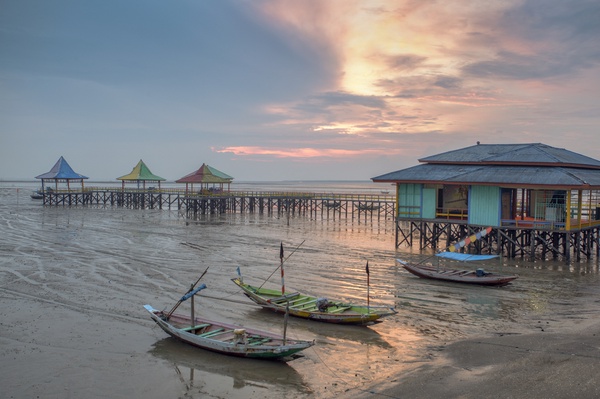
Book din neste reise
Hotell
Fly
Charter
Restplass
Leiebil
Feriehus
Søk etter hotell i hele verlden
The City
For centuries, Surabaya has attracted immigrants from the Javanese hinterland, the neighbouring island of Madura, and from all the islands of Indonesia. As a result, the city is an ethnic melting pot, including an Arab quarter founded by traders from the Middle East, and a Chinese quarter inhabited by the descendants of traders who settled here more than five centuries ago.
On the south bank of the Kalimas River estuary, Surabaya is a fast-growing modern city: the second largest in Indonesia and one of the country’s major centres for shipbuilding, heavy manufacturing and light industry. It is also a major financial centre, and ambitious new developments for the future include the construction of Southeast Asia’s longest bridge, linking the city to the island of Madura.
The pace of life in the bustling city centre can be overwhelming for the first-time visitor. Limousines, taxicabs, buses, bemo minibuses and becak scooter-taxis jostle for space on the busy avenues, where gleaming hotel, apartment and office towers dominate. A few blocks inland from the waterfront, Kampung Arab (Arab Quarter), is a labyrinth of old-fashioned chophouses and narrow, colourful streets reminiscent of the city’s mercantile past. Chinatown straddles Jalan Kembang Jepun.
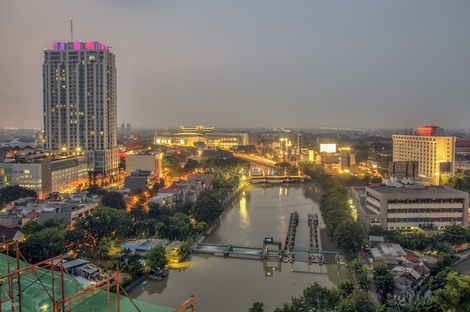
Do & See
Much of Surabaya’s heritage has been swept away by fast-paced modernisation, and the city was also heavily damaged in the aftermath of World War II during the struggle for independence, earning its title the "Hero City" of Indonesia. As a result, it has rather few major visitor attractions, but boasts a couple of distinct neighbourhoods, each with its own distinct flair, including the Arab Quarter and Chinatown. Surabaya is also home to Masjid Nasional Al Akbar, one of Southeast Asia's most imposing modern mosques.
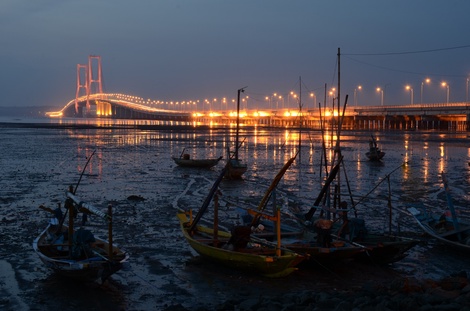
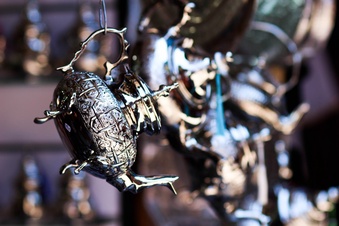
Arab Quarter
One of the centerpieces in Surabaya's eclectic mosaic of a cityscape, the Arab Quarter (also called Ampel) is a must-visit area of the city that much resembles the mazy old Arabic town centers. While here, take time to see the expansive, marble-floored Ampel Mosque.
Adresse: 53 Jl Ampel Masjid, Surabaya
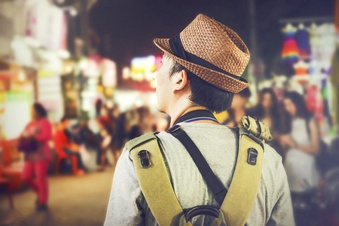
G-Walk
With mid- and upper range establishments mixed in with busy street food stalls, Surabaya's G-Walk is a favorite dining spot for many locals. Stretching between Pakuwon Super Mall and Ciputra Golf, it is a lively area packed with bars, eateries and outdoor markets.
Adresse: Jl. Niaga Gapura, Surabaya
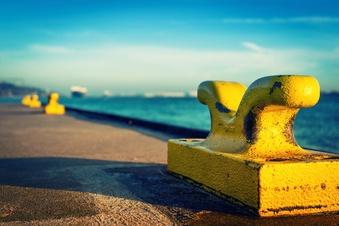
Kalimas Traditional Harbour
For a strong whiff of the sea and a taste of what remains of old Surabaya visit the Kalimas Harbour, the city’s original port. This is where broad-beamed pinisi schooners unload produce along a 2 km stretch of quayside. The best time to visit is early in the morning when the boats are setting sail.
Adresse: Kalimas Harbour, Surabaya
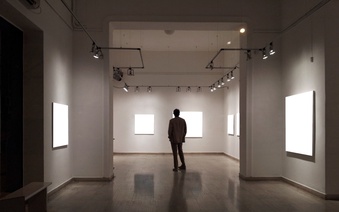
Mpu Tantular Museum
Surabaya’s most important museum offers fascinating insight into the ancient history of the city. See exhibits dating back to the era of the Majapahit Empire, Chinese and Annamese ceramics, wayang puppet figures, paintings and photos of colonial Surabaya and batik print-making equipment.
Adresse: 7 Jl. Lebak Rejo, Surabaya
Telefon: +62 31 389 4679
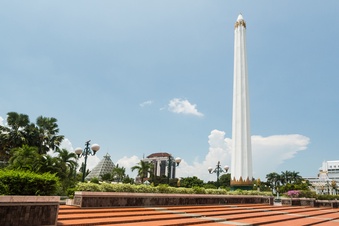
Tugu Pahlawan (Heroes’ Monument)
This landmark monument can be seen in the city centre. The Tugu Pahlawan is a typical piece of grandiose post-independence Indonesian public art and was erected in memory of the independence fighters who fell in the Battle of Surabaya in November 1945.
Adresse: Taman Kebon Rojo, Surabaya
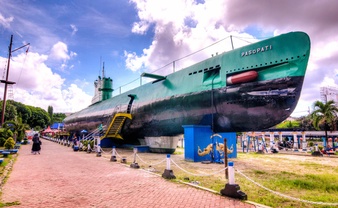
Monumen Kapal Selam (Submarine Monument)
On the bank of the Kalimas River, the Indonesian Navy’s first submarine - the Soviet-built Whiskey class sub Pasopat - is now a national monument honouring heroes of the independence struggle and celebrating the country’s seafaring tradition. Built in Vladivostok, it was bought by Indonesia in 1962.
Adresse: 39 Pemuda Street, Surabaya
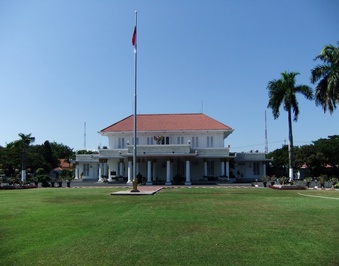
Governor’s Residence (Grahadi)
The huge national banner and colonial era cannon outside this gracious colonial building underline its status as the official residence of the governor of East Java. The gardens are often used for cultural events, colourful official ceremonies on national holidays and state occasions.
Adresse: Jalan Gubernur Suryo, Surabaya
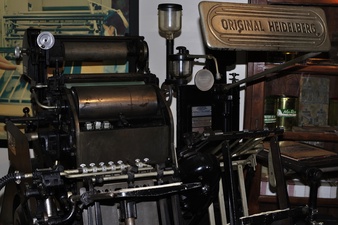
House of Sampoerna
The museum's most popular attraction is the operating production line of the famous local cigarette brand Dji Sam Soe (banned in a number of countries for excessive tar content). Come before 3pm on weekdays to see labourers at work; any day until 10 pm to see the tobacco/cigarette-related exhibits.
Adresse: 6 Taman Sampoerna, Surabaya
Telefon: +62 31 3539000
Åpningstider: Daily 9 am-10 pm
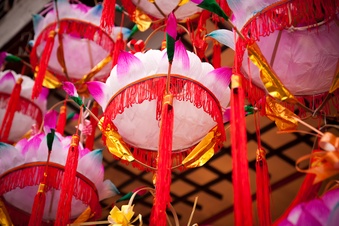
Chinatown
Along with the Arab Quarter, Chinatown is one of the more vibrant parts of the city with its own distinct flare. Apart from the exotic herbal remedies and omnipresent dragons, there is a daily fish market and a pop-up street food market in one of it's busy narrow streets.
Adresse: Jl. Panggung, Surabaya
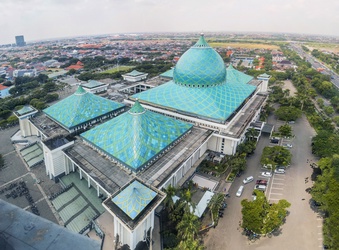
Masjid Nasional Al Akbar
The monumental Masjid Nasional Al Akbar is a spectacular modern mosque, one of the most imposing in Southeast Asia, let alone Indonesia itself. Access is open to visitors, and the top of one of its minarets offers spectacular views over the city (staff will guide you to the elevator on request).
Adresse: Jl. Masjid Al Akbar Timur I, Surabaya
Telefon: +62 31 8289755
Dining
Indonesia’s favourite dish, nasi goreng (mixed fried rice) is on the menu everywhere, from hotels' breakfast tables to simple open-air food stalls. Surabaya’s cuisine is as varied as its people, with restaurants serving a host of Indonesian favourites.
Chicken and beef are the most common fowl and meat dishes. Indonesia is predominantly a Muslim country, and pork is a rarity. Hawker stalls and food markets purvey regional delicacies from all over the country. At these, you order what you want from any of dozens of vendors and find a table wherever you can.
Kayoon Park, on the west bank of the Kayoon River, is filled with food stalls selling East Javanese and Madurese favourites soon after sundown. As well as these typical treats, most major hotels have as many as half a dozen restaurants serving western-international, Chinese, Japanese, and Indian food. Many of the best restaurants can be found in larger hotels, but budget travellers will find plenty of modestly priced eateries all over.
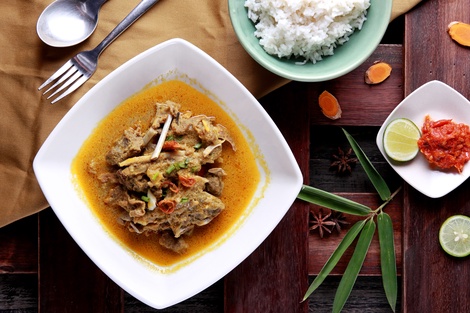
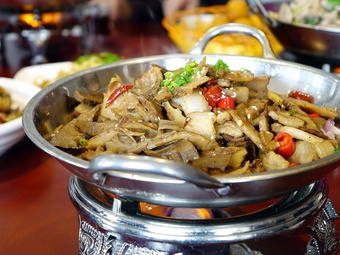
Sarkies
This elegant premier restaurant at the luxury Majapahit Mandarin Oriental is probably the most exclusive eating place in Surabaya. The menu is varied and consists of both western and eastern dishes (emphasis on Chinese) and a superb choice of the freshest seafood.
Adresse: 65 Jalan Tunjungan, Surabaya
Telefon: +62 31 545 4333
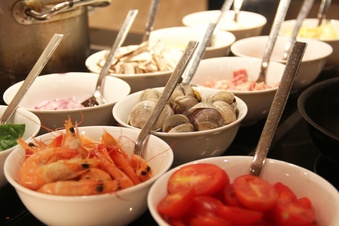
Janggala Restaurant
The Novotel’s poolside restaurant offers a wide choice of international dishes. The daily dinner buffet offers an excellent selection of savory dishes and desserts, as well as very good value for money. Seating is in pleasant garden surroundings. Buffet-style breakfast is offered daily.
Adresse: 173-175 Jalan Ngagel, Surabaya
Telefon: +62 31 501 8900
Åpningstider: Daily 6 am-11 pm
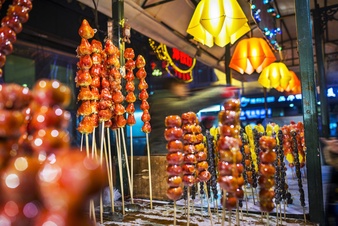
Kya Kya Food Centre
The "food centre" is a collection of street food vendors who set up shop daily (at around 4 pm) right in the middle of Surabaya's Chinatown. This is, perhaps, the best place to try various Indonesian and Chinese delights with minimal expenses - perfect for travellers on a budget.
Adresse: Kembang Jepun St, Bongkaran, Pabean Cantian, Surabaya City, East Java
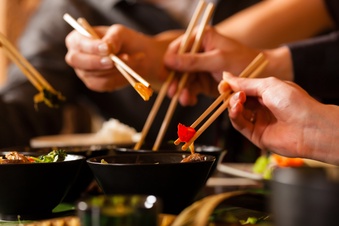
Tunjungan Food Court
In the Tunjungan Food Court, you can find many budget fast-food places. There are more than 20 different outlets selling Chinese, Indonesian, and Western favourites here. Grab a table and eat your fill at very affordable prices in an air-conditioned space.
Adresse: Tunjungan Plaza, Surabaya
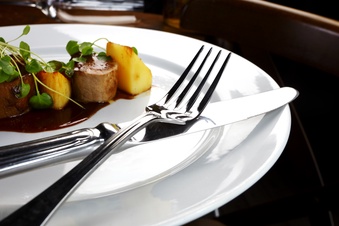
Indigo
Less formal than Sarkies (yet undoubtedly elegant), Indigo’s offers a wide choice of Asian and European fusion dishes, stylish contemporary ambience and a relaxed atmosphere. Try the beef stew, pasta or dim sum; drop in for the buffet-style breakfast served daily.
Adresse: Tunjungan St No.65, Genteng, Surabaya City, East Java
Telefon: +62 31 545 4333
Åpningstider: Daily 6am–11pm
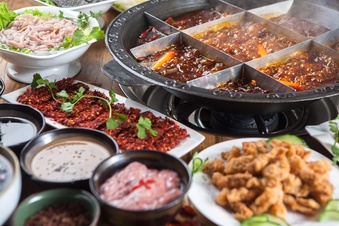
Food Festival Food Court
This outdoor food court is home to a multitude of local eateries, and is the perfect place to acquaint oneself with Indonesian cuisine. Most stalls have photo illustrations to give you an idea of what the dishes look like when served. Arrive early, as it tends to get very busy around dinner time.
Adresse: Kejawan Putih, Surabaya
Telefon: +62 31 5911022
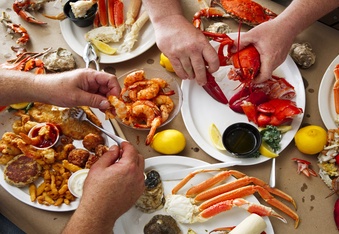
Layar Seafood
Perhaps the most popular seafood restaurant in town, Layar Seafood is something of an aquarium with multiple marine creatures inside glass tanks lining the walls. Fish, calamari, clams, prawns, crab, and any kind of seafood imaginable are cooked to perfection and offered at moderate prices.
Adresse: Jl. Manyar Kertoarjo No.23-25, Manyar Sabrangan, Kec. Mulyorejo, Kota SBY, Jawa Timur
Telefon: +62 31 5947666
Åpningstider: Daily 11am–10pm
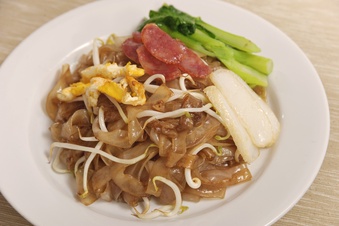
Apeng Kwetiau Medan
Apeng Kwetiau Medan is a name known to locals - the restaurant is said to offer some of the best kway teow (a fried noodle dish with vegetables, meat and/or seafood) in town. A favourite meal in a number of Asian countries, it has been cooked to perfection at Kwetiao Apeng for a number of years.
Adresse: Jl. Kedung Doro 267, Wonorejo, Kec. Tegalsari, Kota SBY, Jawa Timur
Telefon: +62 31 5345778
Åpningstider: Daily 8:30am–7:30pm
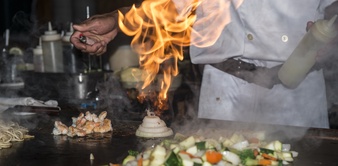
Imari Japanese Restaurant
This upscale Japanese restaurant invites visitors to a "dinner and a show" - chefs use the teppanyaki grill to entertain diners with creations like an "onion volcano", and the extensive menu features some of the finest examples of Japanese cuisine, including sushi.
Adresse: 85-89 l. Embong Malang, Surabaya
Telefon: +62 31 545 8888
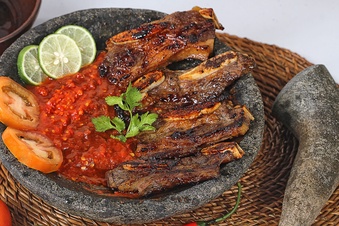
Warung Bu Kris
As hard as it is to pick a stand-out amongst the dozens of "warungs" dotting the city, Bu Kris definitely makes the cut as one of the best. Try the "iga penyet" - a traditional local dish consisting of ribs and a dip called "sambal", generously smothered over the meat. The interior is authentic and very casual.
Adresse: 1, Dukuh Pakis, Kec. Dukuhpakis, Kota SBY, Jawa Timur
Åpningstider: Daily 10am–10pm
Cafes
Considering that coffee is one of the biggest assets of East Java, having a cup of coffee in Surabaya is an experience not to be missed. There are plenty of cafés in the city, many offering western-style pastries and cakes, along with more substantial meals.
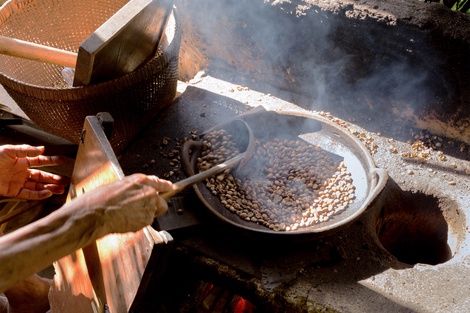
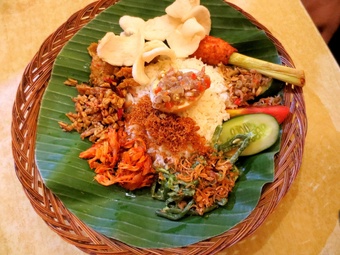
Sampoerna Coffee House
Sampoerna Coffee House is an arty, stylish café-bar with an interesting menu and colourful surroundings. Located at the Sampoerna Museum, this is a perfect place to grab a bite of Indonesian food or have a drink before embarking on further exploration of the city.
Adresse: 6, Krembangan Utara, Kec. Pabean Cantian, Kota SBY, Jawa Timur
Telefon: +62 31 353 9000
Åpningstider: Daily 9am–6pm

Igor's Pastry
At Igor’s Pastry, you can try exquisite pastries and bread. The bakery caters to some of the most sophisticated tastes and offers speciality baked items, such as egg- and gluten-free products, bread enriched with fibre, sugar-free products, pudding and more.
Adresse: Jl. Biliton No.55, Gubeng, Kec. Gubeng, Kota SBY, Jawa Timur
Telefon: +62 31 5038342
Åpningstider: Daily 7am–10pm
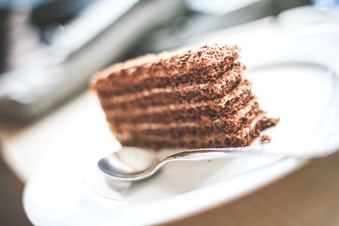
Dapur Cokelat
If you like chocolate, you have come to the right place. At Dapur Cokelat you can taste everything from cream and cake blends to chocolate figurines, and shop for some of the most elegant chocolate creations in the city. Prices are above average, but sales are held regularly.
Adresse: Jl. Raya Jemursari No.317, Sidosermo, Kec. Wonocolo, Kota SBY, Jawa Timur
Åpningstider: Daily 10am–8pm
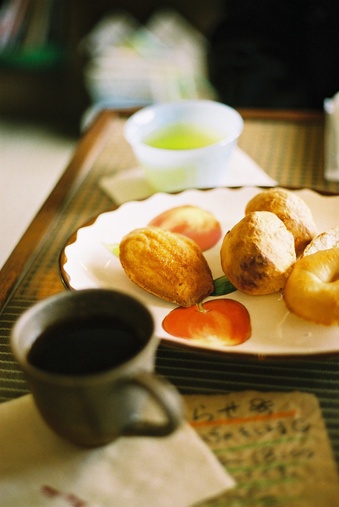
Le Cafe Gourmand
This elegant Western-style café is where one will find some of the best fresh pastries in town. Try a specialty coffee with an enormous airy croissant or go for something more substantial - perhaps, an Italian pasta dish for lunch or eggs Benedict for breakfast.
Adresse: 2 Jalan Pregolan, Surabaya
Telefon: +62 31 53 555 11
Åpningstider: Mon-Fri 9 am-11 pm, Sat-Sun 9 am-1 am
Bars & Nightlife
Much of Surabaya's nightlife revolves around upscale hotels - Shangri-La, for one, attracts an international crowd and is one of the expats' favourite haunts in the city. Although the variety of nightlife establishments isn't huge, there are quite a few bars to choose from if you're looking to spend a night out on the town.
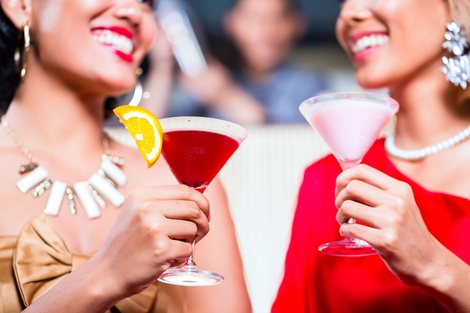

Colors Pub & Restaurant
Colors Pub & Restaurant is a little bit rough and ready, but attracts a lively young local audience. This place has regular live bands and plays popular hits. Come in the evening for a solid pre-party (the drink list is extensive), or stay until late and dance the night away.
Adresse: 81 Jalan Sumatera, Surabaya
Telefon: +62 31 503 0562
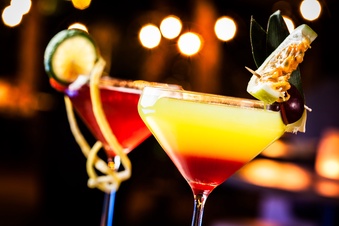
Desperados Bar
The Shangri-La Hotel’s friendly Tex-Mex cantina is a great place for chili, fajitas and burritos earlier in the evening. Later in the evening it turns into one of Surabaya’s liveliest nightspots, and gets increasingly loud as the night progresses. Live band plays often.
Adresse: 120 Jalan Mayjend Sungkono, Surabaya
Telefon: +62 31 6003 8888
Åpningstider: Daily from 6 pm

Jimmy's Club and Lounge
The Marriott Hotel’s lively bar regularly re-invents itself and was recently re-opened as a high-tech, led-light lit premium lounge and club occupying the entire basement of Surabaya's JW Marriott hotel. Food served here is premium, too - delicacies like foie gras and caviar feature on the menu.
Adresse: 85-89 Jalan Embong Malang, Surabaya
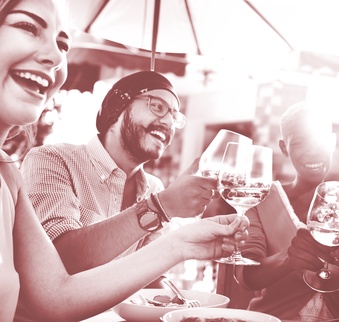
Our Bar
Currently one of the few places to be when it comes to nightlife in Surabaya, Our Bar is a relaxed evening venue with two seating areas - inside, where live music plays on a nightly basis (guitar/piano) and outdoors, in a quieter, green area. Serves an array of bar food.
Adresse: 17 Embong Cerme, Surabaya

Foreplay Club
If you're looking to explore Surabaya's clubbing scene, try Foreplay - a longstanding nightlife establishment smack in Surabaya Town Square. Music played varies depending on the night and the guest DJ (check the web site for more info), but gravitates towards house and rave.
Adresse: 55 Jl. Adityawarman, Surabaya
Telefon: +62 31 5610222
Shopping
Surabaya has several handicraft and antique shops that sell carvings and textiles from Java, Bali and other islands. The city’s large shopping malls are also good places to shop in air-conditioned comfort for international-brand clothing, and other goods at very competitive prices (check out the monumental Tunjungan Plaza). The city’s gold market is on Jalan Bauram, lined with jewellers and goldsmiths shops, most products are of 24 carat purity.
For a colourfully authentic shopping experience, head to one of the city's many markets. Those in the Arab Quarter, for example, feature dozens of vendors that sell cotton and silk sari lengths, batik and ikat cloth, herbs, spices and perfumes.
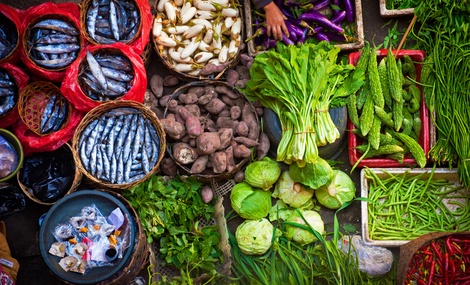
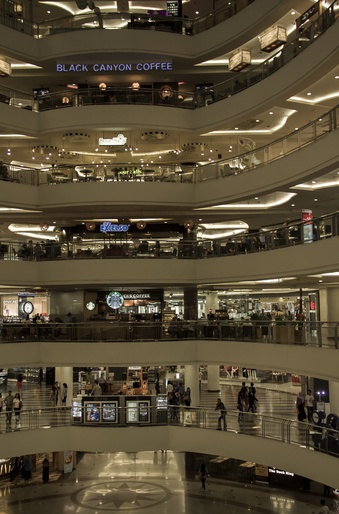
Tunjungan Plaza
Surabaya's shopping central, this mega mall is a giant made up of five different zones, with zone 5 being home to the most upmarket brand boutiques. Bring time, as navigating the endless maze of stores might prove difficult to first-time visitors. The mall houses an IMAX cinema and a food court.
Adresse: 8-12 Jl. Basuki Rachmat, Surabaya
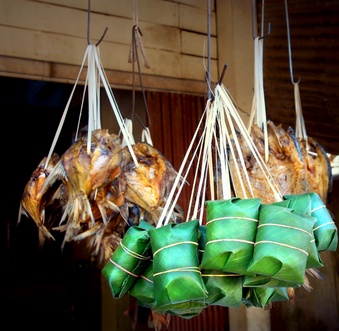
Pasar Genteng
One of Surabaya's many markets, Pasar Genteng is, perhaps, less hectic than its many cousins sprawling around the city. The main attraction here are the exotic local snacks - many come pre-packaged and make for perfect souvenirs and gifts to bring home.
Adresse: Jl. Genteng Besar, Surbaya
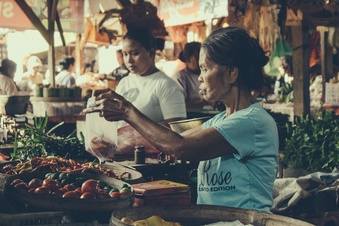
Pasar Pabean
An indoor market linking the Arab Quarter and Chinatown, Pasar Pabean is a bustling mix of vendor's stalls enveloped in the scent of fresh seafood. Fish, crabs, clams and other marine creatures are in abundance, along with various kinds of produce and knick-knacks.
Adresse: Jalan Songoyudan, Surabaya

Galaxy Mall
A large, clean, polished shopping center, Galaxy Mall is home to a large variety of mid-range stores and boutiques, with many international brands well-represented. This one boasts a large number of affordable eateries (check out the Food Galaxy Food Court) and a Cineplex.
Adresse: 37 Jl. Dharmahusada Indah Timur, Surabaya
Telefon: +62 31 593 7100
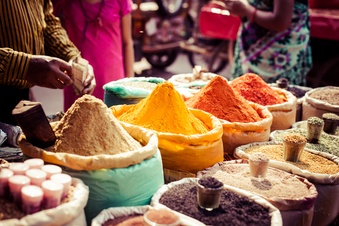
Pasar Ampel
When in the Arab Quarter, do not miss the authentic local bazaar selling all manner of Middle Eastern items - from delicious sweet dates to perfumes to religious paraphernalia. The market's location next to the Ampel Mosque makes it impossible to overlook.
Adresse: Arab Quarter, Surabaya

Ciputra World
Ciputra World mall, adjacent to its namesake hotel, is currently one of city's favorite destinations for brand-name shopping. Well-known international brands of the upmarket sector can be found here in abundance. The top-floor food court offers a variety of dining options.
Adresse: 87 Jl. Mayjen Sungkono, Surabaya
Telefon: +62 31 5632828

Surabaya Town Square (SUTOS)
Both a mall and a hangout venue for the local young crowd, Surabaya Town Square has admittedly lost some of its former prowess, yet still remains attractive to many. Food stands, cafés, estaurants and even a number of nightlife establishments run shop on its premises.
Adresse: 55 Jl. Adityawarman, Surabaya
Telefon: +62 31 5610222
Åpningstider: Sun-Fri 10 am-12 am, Sat 10 am-5 am
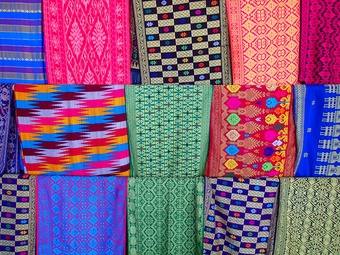
Mirota Batik
A one-stop location for all your souvenir needs, Mirota Batik is rather inconspicuous from the outside but opens up into a spacious store selling all manner of Indonesian specialty items such as batik, traditional clothing, wood carvings, and various souvenirs.
Adresse: 24 Jl. Sulawesi, Surabaya
Telefon: +62 031 5018110
Tourist Information
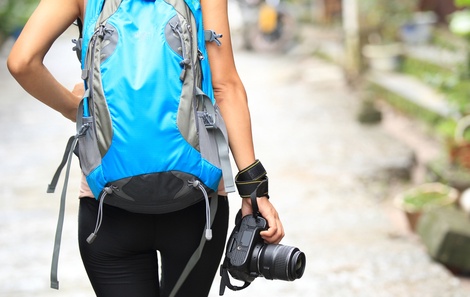

Juanda International Airport
Juanda International Airport is located just outside Surabaya.
Facilities include currency exchange, post office, business centre, tourist information desk, car rental desks and tax free shopping.
Fixed price taxis operate from a rank outside the Arrivals terminal, and all major hotels offer mini-bus shuttle transfers or chauffeur-driven meet-and-greet service.
Bus service operates between the airport and the Bungurasih bus station. Using the bus is only recommended if your route continues from here to other destinations, and you are planning to continue your journey by bus.
Adresse: Juanda International Airport, Surabaya
Telefon: +62 31 2986 200

Public transport
For the visitor, the deluxe air conditioned buses which operate on the cross-town routes are the best public transport option. Key points in the city are also connected by city express buses, operating on two main routes. For all services you can buy tickets on board.
Bemos (small mini-buses) operate on set routes but without a timetable, and leave only when all seats are filled. One of the best ways to see the local environs is to charter a bemo for the day. You can also charter a bemo for a single journey on the same basis, and this can be the most cost effective way of getting around the city.

Taxi
Surabaya has plenty of taxis, but meters lag behind fare inflation and negotiating a fare can be tricky unless you speak Bahasa Indonesia, as few drivers speak any other language. Drivers should carry a rate sheet showing the current fare to most destinations - check the fare before getting in. More sensibly, ask your hotel or restaurant to call a cab for you.
Three-wheeled scooter-taxis (called becak in Indonesia) are ubiquitous, but have no fixed price. For foreigners, they can often be more expensive than a taxi, and a becak ride is rarely enjoyable.
Two longstanding taxi companies are:
Blue Bird Group
+62 31 3721234
Orenz Taxi
+62 31 8799999

Post
Stamps can be bought at most hotel front desks or lobby shops, post boxes are orange-red i ncolor. There are several post offices in the city, the central one located in the Heroes Monument area, at Jalan Kebon Rojo 10.

Pharmacy
Consult the concierge desk at your hotel if you need help locating a pharmacy. Drug stores can be found in various locating throughout the city.
Apotik Prayogi
62 Jl. Kalianyar
+62 31 3719921
Open daily 7.30 am-12 am
Guardian
Tunjungan Plaza, 8-12 Jl. Jenderal Basuki Rachmat
+62 31 5468190
Open daily 10 am-10 pm
Century Healthcare - Grand City
Grand City Lt. Lower Ground
30-31 JL. Gubeng Pojok Dalam
+62 31 5240 5929

Telephone
Country code: +62
Area code: 31

Electricity
The standard voltage is either 110V or 220V, 50Hz.
@ Reiser.no AS 2024